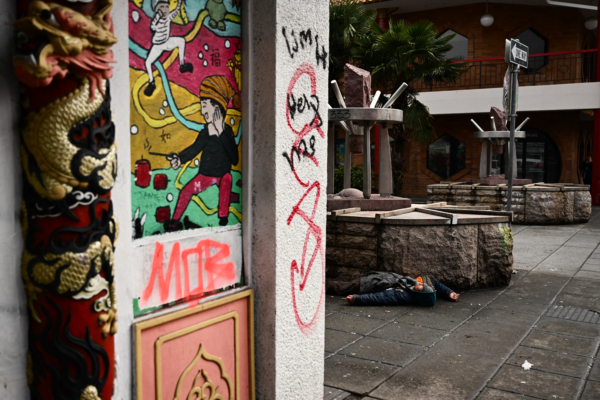In September this year, the Traditional Foundation released a report exposing the role of the Chinese Communist Party (CCP) in driving the fentanyl crisis in the United States. The report shifted focus from Mexico to the co-conspirator CCP and proposed policy solutions to hold the CCP accountable.
Fentanyl is a synthetic opioid drug that is 50 times more potent than heroin. The Centers for Disease Control and Prevention (CDC) estimates that in 2023, 108,000 Americans died from drug overdose, with nearly 75,000 (about three-quarters) attributed to synthetic opioids (primarily fentanyl). The Drug Enforcement Administration (DEA) states that fentanyl is the “deadliest drug threat ever faced in the United States.”
Robert Greenway, Director of the Ellison National Security Center, stated, “From 2021 to 2023, more Americans died from opioid drugs than the total number of Americans who died in World War I, the Korean War, and the Vietnam War combined. It is time to hold the CCP accountable for the fentanyl crisis in America.”
“For years, the CCP has expanded its fentanyl market through financing and production resources provided to Mexican cartel groups, harming American interests. Mexico and the CCP have repeatedly shown a lack of commitment to addressing this crisis. The CCP bears direct responsibility for this crisis but has never faced consequences,” stated research assistant and co-author of the report, Andrew Harding.
“Despite the distance, China—rather than Mexico—has become the primary driver behind the fentanyl crisis in America. China’s drug manufacturing chemicals and money laundering activities have bolstered the cartels in Mexico, leading to harm to Americans. The CCP’s latest offensive against America confirms that the CCP remains America’s top adversary.”
The summary and recommendations of the report are as follows:
• Chinese pharmaceutical companies and other suppliers utilize illicit markets on the dark web to sell illegal narcotics, including numerous fentanyl precursors and chemical materials.
• The money laundering aspects of fentanyl trafficking networks indicate that the role of the CCP in the fentanyl crisis extends beyond Mexican ports; the CCP is highly active throughout Mexico and even in the United States.
• The United States must take the lead in addressing the fentanyl crisis by implementing measures to protect American trade, finance, and healthcare systems, while deploying U.S. intelligence and law enforcement agencies to combat these illegal networks.
As the fourth wave of opioid drugs sweeps through every community and corner of America, the number of Americans dying from fentanyl overdose is higher than ever before. Six years ago, in 2017, Kim Blake’s son, Sean, died from an accidental fentanyl overdose in Burlington, Vermont, at the age of 27.
In 2021, for the first time in history, the number of people who died from drug overdoses across the United States surpassed 100,000. These drugs are illicitly manufactured and trafficked by criminal organizations. According to the DEA, most of the illegal fentanyl discovered in the United States is produced using chemicals from China and trafficked through Mexico.
In 2010, fewer than 40,000 Americans died from drug overdoses, with less than 10% related to fentanyl. At that time, deaths were primarily due to heroin or prescription opioid use.
Researchers at the University of California, Los Angeles (UCLA) recently released a study comparing drug overdose death trends in the United States from 2010 to 2021 using data from the CDC. These data vividly illustrate how fentanyl has redefined drug overdoses in America over the past decade.
Almost every corner of America, from Hawaii to Alaska to Rhode Island, is affected by fentanyl. Data shows that fentanyl-related deaths first began to rise in 2015, and since then, the drug has spread across the U.S., with a sharp increase in mortality rates. UCLA researchers found that in the Northeastern states like Vermont and Connecticut, deaths related to fentanyl and cocaine use were higher. Fatal overdose rates due to fentanyl and another drug were highest in states like Alaska, West Virginia, Rhode Island, Hawaii, and California.

